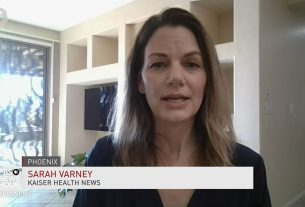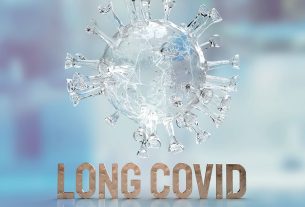The worry that breast cancer may someday return is a troubling source of anxiety for many survivors of the disease. It’s understandable why, since most relapses and metastatic cancers (cancers that have spread) aren’t started by new tumours.
Rather, they’re caused by sleeper cancer cells that suddenly awaken. These “dormant” cancer cells usually colonise places such as the lungs or bones, waiting for the optimal conditions to spring back to life.
For a long time, scientists have tried to work out exactly what shakes these cancer cells out of their slumber. There were hints that chronic inflammation – from factors such as smoking or ageing – could play a role, acting as a kind of unintentional alarm clock.
But new research now provides evidence that common respiratory infections, such as the flu or COVID, are capable of stirring dormant cancer cells into action.
The new study used mice which were engineered to have breast cancer cells. These cells were designed to mimic the behaviour of dormant human cancer cells hiding in the lungs. Researchers then infected the mice with either the influenza virus, which causes the flu, or the SARS-CoV-2 virus, which causes COVID.
What they discovered was both revealing and alarming. Within days of infection, the once-quiet cancer cells started to wake up, multiply rapidly and form new metastatic lesions in the lung.
But what was driving this process? Surprisingly, it wasn’t the viruses themselves. Rather, the researchers discovered that the process was being driven by the immune response that the body mounted to fight the infection.
The body’s immune response is largely driven by a secreted molecule called interleukin-6 (IL-6). Normally, IL-6 helps coordinate the body’s defences against invaders, such as viruses. But when viral infections strike, IL-6 levels can surge.
This temporary spike appears to create the perfect storm for dormant cancer cells to shift from a sleepy, inactive mode to a state that’s highly active where the cells begin to divide.
When the scientists disabled IL-6 in the mice, the dormant cancer cells did not multiply nearly as much when the viral infection was introduced. This suggests that IL-6 acts as a crucial switch for cancer cells between a harmless state and metastasis.
The researchers also found that the reawakening of cancer cells doesn’t last forever. Within about two weeks of infection, the burst of activity settled down and the cancer cells often returned to a dormant state. However, the danger hadn’t passed.
Christoph Burgstedt/ Shutterstock
After each infection, there were now dramatically more awakened cancer cells in the lungs, primed to begin multiplying again once triggered. This creates a greater risk for future relapses, as each episode magnifies the threat.
But why doesn’t our immune system just wipe out these cancer cells if they’re no longer dormant? The study hints that another type of immune cell – called “helper T cells” – step in. But instead of destroying the cancer cells, the T cells shield them from other immune attacks. This shows how cancer can cleverly hijack the body’s defences, turning them from destroyers into guardians.
Read more:
Unlocking the body’s defences: understanding immunotherapy
Dormant cancer cells
While these experiments were performed on mice, the researchers also looked at data from thousands of cancer survivors in the UK and US during the COVID-19 pandemic. They found that cancer patients – especially those who’d recently had respiratory infections – faced nearly double the risk of dying from cancer compared to those who did not get infected. This pattern was clearest in the months after infection – matching exactly what was seen in the mouse studies.
The link between viral infection, inflammation, and cancer relapse could help explain why cancer death rates spiked early in the pandemic, especially among those with a history of breast or other cancers. This new understanding is sobering – but also something that we can take action against.
For breast cancer survivors, and potentially survivors of other cancers, the findings highlight the importance of protecting themselves from respiratory infections – not just to avoid the illness itself, but to lower the risk of setting off dormant cancer cells that could lead to life-threatening metastasis. Measures such as vaccination and rapid treatment of infections could become part of the standard toolkit for supporting long-term health after cancer.
There are also drugs that target IL-6 which are already being used for other conditions such as Castleman’s disease and COVID. This raises questions about whether these drugs might also shield vulnerable cancer survivors from relapse during or after severe viral infections.
This recent study reminds us just how interconnected our health truly is. While viral infections are often thought to only affect us temporarily, a growing body of research shows they may exert hidden, long-term effects.
Ultimately, these are early days for translating findings from this work into human therapies. But they offer new hope that by understanding and intercepting the “wake-up calls” for dormant cancer cells, it may one day be possible to prevent cancer relapses before they ever get started – dramatically improving outcomes for survivors everywhere.



